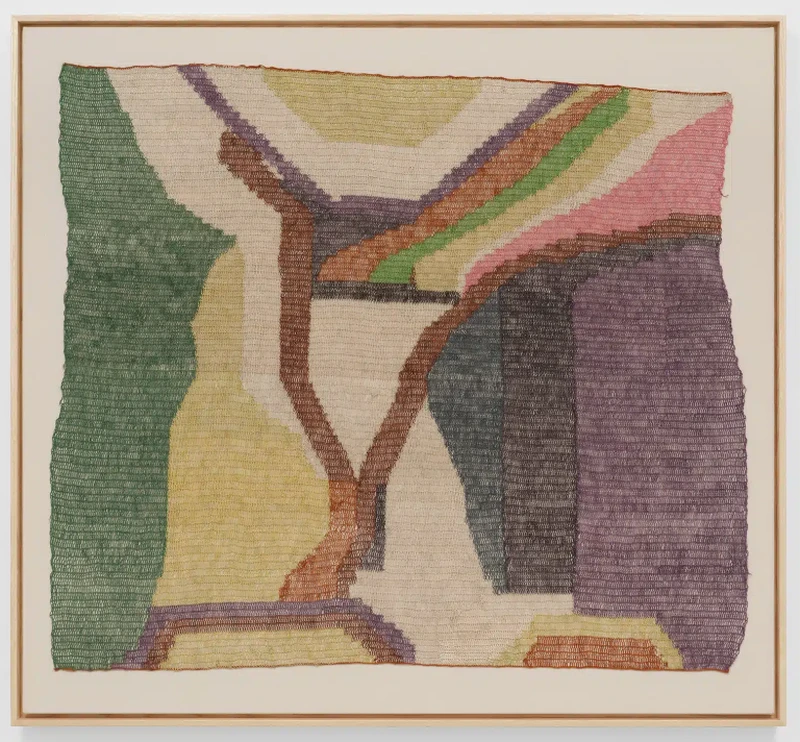Claudia Alarcón & Silät: Tayhin
14 Jun-14 Sep 2025


‘The geometric shapes we make in the fabric have meanings; each one is a message. Some shapes reference birds, footprints, cat’s eyes, our landscape. In the images we recall our ancestors and see that they are still part of us.’
– Claudia Alarcón
This summer, De La Warr Pavilion presents the first institutional exhibition of works by Claudia Alarcón & Silät. Alarcón is an indigenous textile artist from the La Puntana community of Wichí people of northern Salta, Argentina. Alongside her own artistic practice, she leads the Silät collective, an organisation of over one hundred women weavers of different generations from the Alto la Sierra and La Puntana Wichí communities. The exhibition brings together a series of recent weavings created by Alarcón and the collective, presented in a site-specific installation in the First floor gallery. This exhibition follows the collective’s participation in the 60th International Exhibition at the Venice Biennale in 2024.
Formed in 2023 and coordinated by Alarcón and curator Andrei Fernández, the Silät collective emerged from the Thañí/Viene del monte [Comes from the Bush] organisation, a public project aimed at reviving ancestral textile traditions across the Salta region. Meaning ‘information’ or ‘alert’, Silät’s works are a non-verbal mode of communication; they are a message intended for those who do not know of this centuries-old practice that has been passed down through generations of women. As Alarcón has said of the group’s international recognition: ‘The important thing is that everyone now knows that we are here, part of this land, alive and resisting. We are always in solidarity, seeking respect and value for us and our work, for who we are and what we want to be, in honour of our ancestors. We will continue fighting!’
Alarcón & Silät’s experimentation with materials and subject matter forms part of a wider intent to foster creativity, independent and self-sustaining practice, providing women across generations and geographies the opportunity to transmit a contemporary indigenous culture into the webs of international art dialogues, beyond ethnographic readings. The exhibition’s title – Tayhin – is the Wichí term for weaving, an intransitive verb that also means building, reconstructing and healing. It speaks to the collective nature of image-making that underpins Silät’s output, a ‘communal territory from which springs a collective imagination’ (Fernández).
Weaving is a communal, female-led and ancestral practice in Wichí communities and is fundamental to their visual culture, narrative history and economics. For centuries, thread from the local chaguar plant has been hand-spun to create different objects, such as bags and fishing nets, and since 2015, with the support and encouragement of Fernández, large-scale artworks that depict geometric forms, each with their own symbol or message. These weavings are often based on drawings made by hand, on a computer, or from sketches incised into the ground.
The chaguar from which these works are made is central to the lives of Wichí women, as they live alongside this fragrant, resilient and versatile plant. After its leaves are carefully sought and cut from forests, they are peeled and crushed to loosen the fibres, then soaked, dried and spun. These threads are often dyed with natural pigments derived from roots, bark, leaves and seeds, while artificial dyes are also used to imbue the works with brighter tones. Each weaving is the result of a collective choreography, with some of the largest works involving up to seven women at a time.